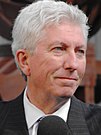Canadian federal election 2006
|
|
|||||||||||||||||||||||||||||||||||||||||||||||||||||||||||||||||||||||||||||||||||
|---|---|---|---|---|---|---|---|---|---|---|---|---|---|---|---|---|---|---|---|---|---|---|---|---|---|---|---|---|---|---|---|---|---|---|---|---|---|---|---|---|---|---|---|---|---|---|---|---|---|---|---|---|---|---|---|---|---|---|---|---|---|---|---|---|---|---|---|---|---|---|---|---|---|---|---|---|---|---|---|---|---|---|---|
|
|||||||||||||||||||||||||||||||||||||||||||||||||||||||||||||||||||||||||||||||||||
|
|
|||||||||||||||||||||||||||||||||||||||||||||||||||||||||||||||||||||||||||||||||||
|
308 seats in the 39th Canadian Parliament 155 seats were needed for a majority |
|||||||||||||||||||||||||||||||||||||||||||||||||||||||||||||||||||||||||||||||||||
| Opinion polls | |||||||||||||||||||||||||||||||||||||||||||||||||||||||||||||||||||||||||||||||||||
| Turnout | 64.7% ( |
||||||||||||||||||||||||||||||||||||||||||||||||||||||||||||||||||||||||||||||||||
|
|||||||||||||||||||||||||||||||||||||||||||||||||||||||||||||||||||||||||||||||||||

|
|||||||||||||||||||||||||||||||||||||||||||||||||||||||||||||||||||||||||||||||||||
|
|||||||||||||||||||||||||||||||||||||||||||||||||||||||||||||||||||||||||||||||||||
The 2006 Canadian federal election (more formally, the 39th General Election) was held on January 23, 2006, to elect members of the House of Commons of Canada of the 39th Parliament of Canada. The Conservative Party of Canada won the greatest number of seats: 40.3% of seats, or 124 out of 308, up from 99 seats in 2004, and 36.3% of votes: up from 29.6% in the 2004 election.
The election resulted in a minority government led by the Conservative Party with Stephen Harper becoming the 22nd Prime Minister of Canada. By proportion of seats, this was Canada's smallest minority government since Confederation. Despite this it was the longest-serving minority government overall.
Voter turnout was 64.7%.
An investigation by Elections Canada into improper election spending by the Conservative Party became widely known as the In and Out scandal. Charges were eventually dropped in a plea deal.
This unusual winter general election was caused by a motion of no confidence passed by the House of Commons on November 28, 2005, with Canada's three opposition parties contending that the Liberal government of Prime Minister Paul Martin was corrupt. The following morning Martin met with Governor General Michaëlle Jean, who then dissolved parliament, summoned the next parliament, and ordered the issuance of writs of election. The last set January 23, 2006, as election day and February 13 as the date for return of the writs. The campaign was almost eight weeks in length, the longest in two decades, in order to allow time for the Christmas and New Year holidays.
...
Wikipedia




